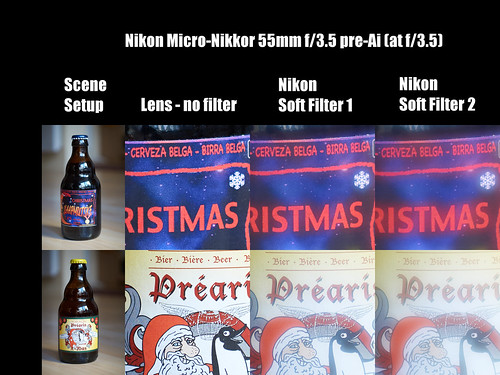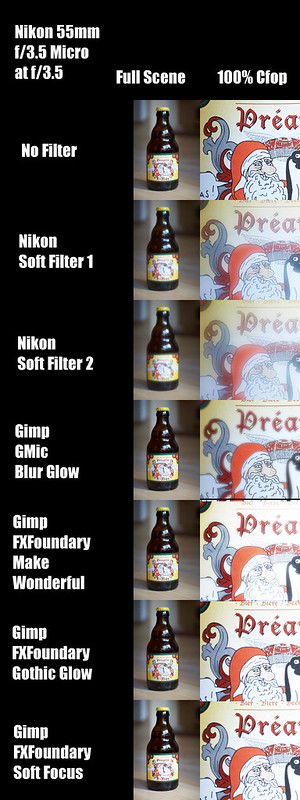I've been for a rather too long a time considering softer images. I've owned a Portland, several Fuji SF large format film lenses, and enjoyed using the interesting Mamiya RB 150mm SF with softness control disks. I'm not sure why, but I like the effect, but only when "done properly."
My wife and I visited d'Orsay Museum and had the unexpected opportunity to look at a few late-1800's, early 1900's Pictorialist style photographs. There were three images that really caught my eye. One was a page straight out of Stieglitz's Camera Work publication. It was George Bernard Shaw's "Portrait of Alvin Langdon Coburn." The online versions of this simply do not do the original justice. The way Coburn was clearly, but softly in focus and the way the background dropped away into a subtle scene of the path overhung with branches of trees really pleased me.
Another wonderful image was a cyanotype of a woman in shadow that I'd never seen before. The image was "Florence Peterson" by Paul Haviland. How the photographer used light and shadow, combined with softness in transition areas was really quite nice.
However, the image that really took me by surprise as Paul Haviland's "Catherine Haviland". The optical effects were subtle. The depth of field was unexpected. In current photographic practice wide aperture lenses are used to separate a very sharp in-focus subject from a very-blurred background by using exceedingly narrow depth of field. The details of the Paul Haviland scene, again by comparison to current practice, were quite remarkable and extended across the image. I'll say it again; online copies of these images, to me, fail to share the depth of beauty of original prints.
Back at the apartment I did (yet again) some research into soft focus effects in photography. An article on Nikon's website told me something that I'd not carefully considered. It was that early soft focus designs allowed for an optical effect that included sufficient depth of field to keep the important parts of the subject in focus. This was exactly what I'd seen in the "Catherine Haviland".
I've avoided soft filters like the plague, feeling that they weren't somehow pukka to the craft. But after reading the Nikon article I found one each Nikon Soft Filter numbers one and two on eBay. They've arrived and, well, here's yet another comparison.
Using a subject that doesn't move very quickly on it's own, I set up a Sony NEX-5T with Nikon Micro-Nikkor 55mm f/3.5 non-AI on a tabletop tripod, set mode to "A", set the ISO to 100, set the self timer to two seconds, and took three images. Here is the effect of the filters on one of my favorite subjects.
As always, pop on over to this image hosted on Flickr and take a look at the 100% file size version to see the subtle and not so subtle effects.

Thinking a bit further I realized I'd failed to see how the current state of soft filters might act on the same subject. So I took the sharp image and passed it through the Gimp and several different softening effects. All filters were left at their default settings. No attempt was made to normalize the contrast ranges between images, nor was any attempt made to get the highlight/shadow tones to match. While I'm not entirely sure how close I could get to the Nikkor Soft Filter effects, I'm fairly certain I could sort it out quickly enough. Having said that, the G'Mic Blur Glow filter at it's default settings is really quite nice.

My wife and I visited d'Orsay Museum and had the unexpected opportunity to look at a few late-1800's, early 1900's Pictorialist style photographs. There were three images that really caught my eye. One was a page straight out of Stieglitz's Camera Work publication. It was George Bernard Shaw's "Portrait of Alvin Langdon Coburn." The online versions of this simply do not do the original justice. The way Coburn was clearly, but softly in focus and the way the background dropped away into a subtle scene of the path overhung with branches of trees really pleased me.
Another wonderful image was a cyanotype of a woman in shadow that I'd never seen before. The image was "Florence Peterson" by Paul Haviland. How the photographer used light and shadow, combined with softness in transition areas was really quite nice.
However, the image that really took me by surprise as Paul Haviland's "Catherine Haviland". The optical effects were subtle. The depth of field was unexpected. In current photographic practice wide aperture lenses are used to separate a very sharp in-focus subject from a very-blurred background by using exceedingly narrow depth of field. The details of the Paul Haviland scene, again by comparison to current practice, were quite remarkable and extended across the image. I'll say it again; online copies of these images, to me, fail to share the depth of beauty of original prints.
Back at the apartment I did (yet again) some research into soft focus effects in photography. An article on Nikon's website told me something that I'd not carefully considered. It was that early soft focus designs allowed for an optical effect that included sufficient depth of field to keep the important parts of the subject in focus. This was exactly what I'd seen in the "Catherine Haviland".
I've avoided soft filters like the plague, feeling that they weren't somehow pukka to the craft. But after reading the Nikon article I found one each Nikon Soft Filter numbers one and two on eBay. They've arrived and, well, here's yet another comparison.
Using a subject that doesn't move very quickly on it's own, I set up a Sony NEX-5T with Nikon Micro-Nikkor 55mm f/3.5 non-AI on a tabletop tripod, set mode to "A", set the ISO to 100, set the self timer to two seconds, and took three images. Here is the effect of the filters on one of my favorite subjects.
As always, pop on over to this image hosted on Flickr and take a look at the 100% file size version to see the subtle and not so subtle effects.

Thinking a bit further I realized I'd failed to see how the current state of soft filters might act on the same subject. So I took the sharp image and passed it through the Gimp and several different softening effects. All filters were left at their default settings. No attempt was made to normalize the contrast ranges between images, nor was any attempt made to get the highlight/shadow tones to match. While I'm not entirely sure how close I could get to the Nikkor Soft Filter effects, I'm fairly certain I could sort it out quickly enough. Having said that, the G'Mic Blur Glow filter at it's default settings is really quite nice.

No comments:
Post a Comment